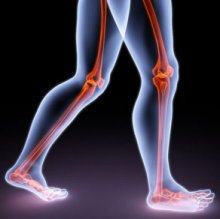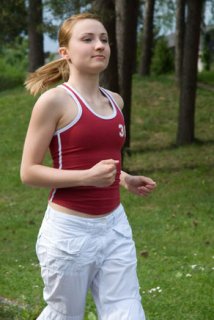 Rarely do we find that our left and right sides are symmetrical. This is equally so for our feet and legs. Additionally, many of us have mild deformities – perhaps a torsion in your pelvis, a bowed leg, or one leg longer than the other.
Rarely do we find that our left and right sides are symmetrical. This is equally so for our feet and legs. Additionally, many of us have mild deformities – perhaps a torsion in your pelvis, a bowed leg, or one leg longer than the other.
When we stand, walk or run our body has to cope with and compensate for these anomalies. It is these compensations that put structures such as muscles, joints, ligaments and tendons under undue strain as they begin functioning in an abnormal or compromised manner. Over time the structures become inflamed or injured.
A Biomechanics assessment is an investigation into your lower limb function – looking closely for abnormalities and compensations. We can look closely into the underlying possible causes of heel pain, knee pain and even back pain.
Once we have identified the causes of your problems we can develop a tailor made treatment plan to improve your symptoms. This may involve one or more of the following:
- Exercises to stretch or strengthen muscles
- Orthoses – specially made devices for you to wear inside your shoe to control, realign or cushion the abnormalities.
- Footwear advice
- Referral on to other members of the healthcare team if further specialist advice is needed.
 Full Biomechanical Assessment
Full Biomechanical Assessment
A biomechanics assessment takes about 1 1/4 hours and is undertaken by a qualified Registered Podiatrist. You will need to bring shorts to change into so that we can see your knees in order to help our examination.
The examination has two parts:
We will take various specific measurements with you laying down and standing up (static assessment). We will normally video you walking (or running) on a treadmill so we can understand what is happening during gait – this is called ‘video gait analysis’ (dynamic assessment).
Static Assessment: non-weight bearing anatomical examination, muscle testing, weight bearing lower limb posture assessment.
Dynamic Assessment:
- Video gait analysis and/or
- Pressure plate analysis.
Orthoses
What are orthoses?
An ‘orthosis’ is a medical term which describes a device that supports, realigns or assists in the function of the musculo-skeletal system. In podiatry we use foot orthoses.
Therefore “Foot orthoses” are designed to support, align or improve the function of the feet and lower limbs during gait.
Functional orthoses apply forces to the feet enabling the podiatrist to alter certain movements or off-load stress within tissues. Their prescription is based on sound biomechanical and anatomical science but may also involve a degree of lateral thinking by the podiatrist if you have complex problems.
Non-functional orthoses may be designed to improve skin and tissue viability or off-load painful pressure areas.
Foot Posture Screening
We offer a complimentary 15-minute foot posture screening at our Weybridge practice. This is a non-diagnostic appointment, but will give an indicator of your foot type: normal, high-arched (supinated) or low-arched (pronated). Call us 73 to book your complimentary session.








